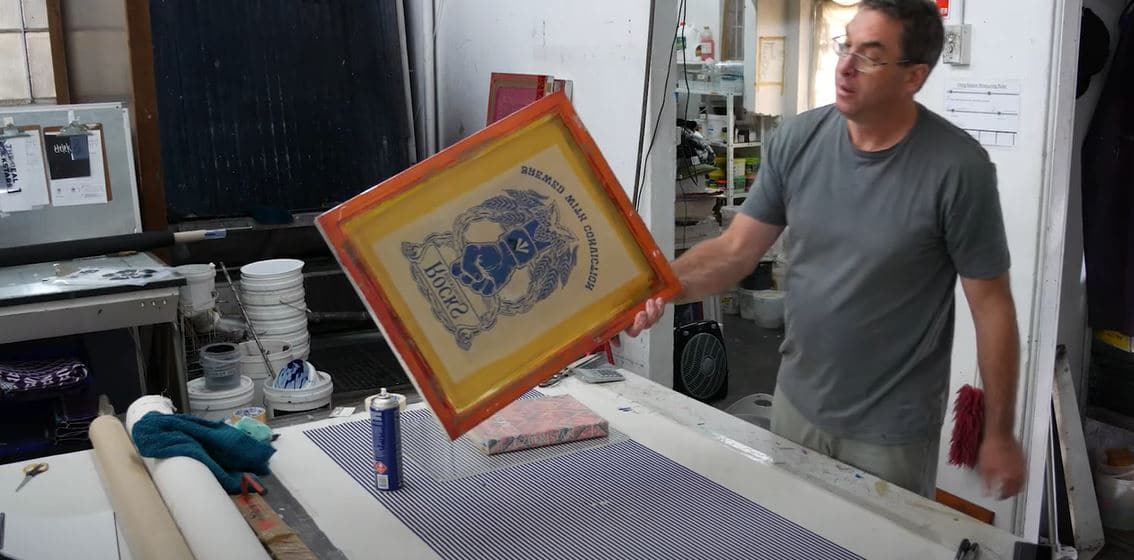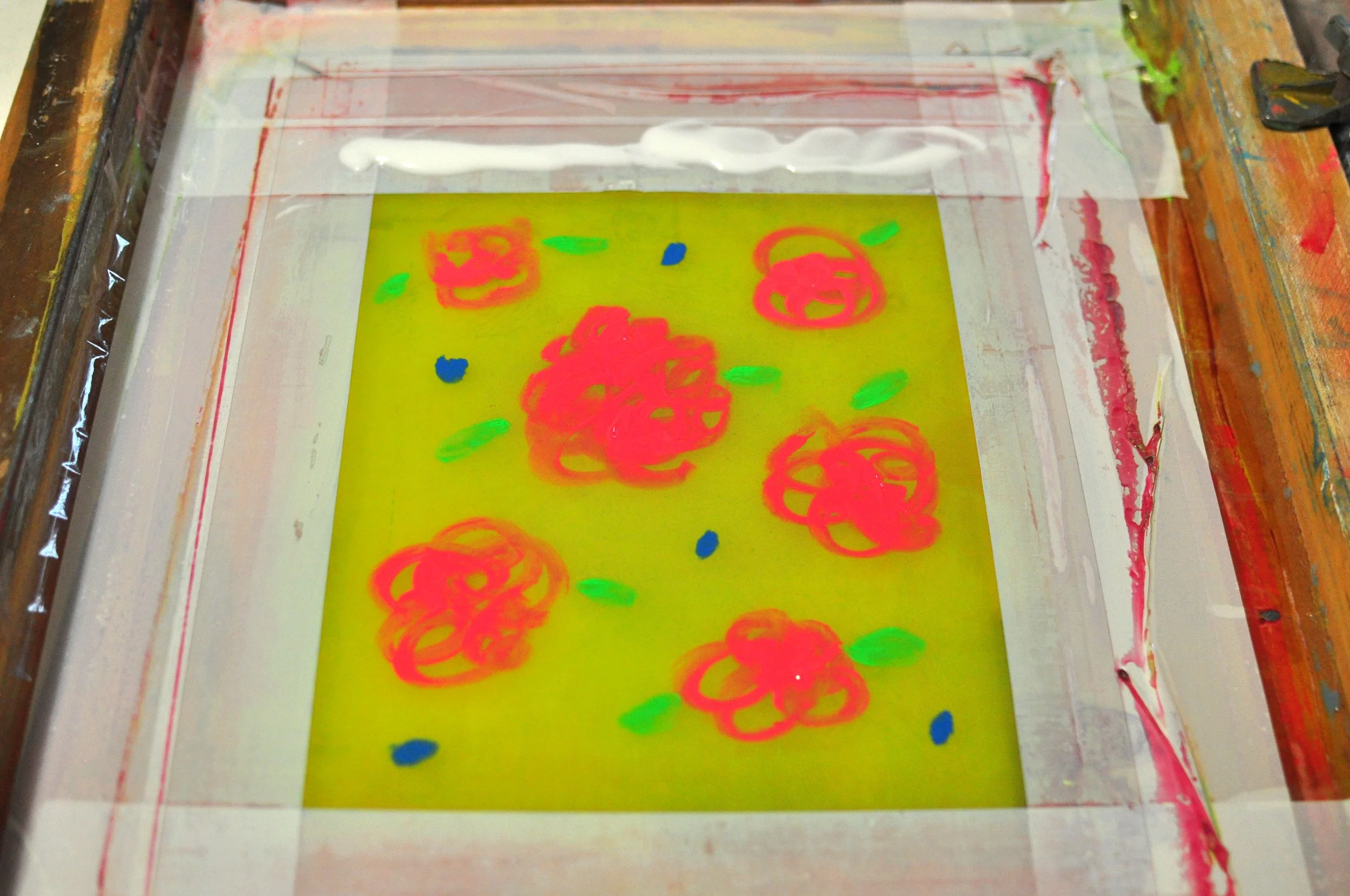Discover the Various Types of Screen Printing Techniques for Your Next Job
Screen printing supplies a diverse series of methods that can improve any type of innovative project. From typical techniques like serigraphy to contemporary developments such as direct-to-garment printing, each approach has its unique advantages. Specialty choices, including metallic and green inks, present a lot more opportunities. Understanding these techniques can substantially influence the final end result. However, the challenge exists in choosing the most suitable approach for particular needs and wanted effects. What elements should one think about?

The Basics of Screen Printing
Although screen printing might seem facility, it is fundamentally an uncomplicated procedure that entails moving ink with a mesh screen onto various surfaces. The method starts with the creation of a pattern, which defines the layout to be printed. This pattern is affixed to a mesh screen, commonly constructed from polyester or nylon. As soon as the stencil remains in place, ink is put on the screen and pushed with the mesh utilizing a squeegee, causing the wanted pattern being published on the underlying product.
Screen printing can be done on a variety of substrates, consisting of paper, plastic, and material, making it a versatile choice for numerous jobs. The procedure enables vivid shades and detailed layouts, making it prominent in sectors such as art, style, and marketing. Comprehending these fundamentals furnishes individuals with the fundamental expertise needed to explore advanced techniques in screen printing.
Standard Screen Printing Techniques
Typical screen printing techniques have been employed for centuries, protecting the workmanship and artistry of this method. This approach utilizes a mesh screen to move ink onto a substrate, such as textile or paper, permitting for lasting and vivid layouts. The procedure starts with producing a stencil, which blocks specific locations of the screen to regulate where the ink will certainly be applied.
One prominent strategy is serigraphy, often used for limited versions and artistic prints. One more is using water-based inks, which are eco-friendly and supply a soft feel on textiles - 10:9 Design reviews. Furthermore, typical approaches can include hands-on printing, where craftsmens use ink with a squeegee, ensuring precision and focus to detail
These strategies remain valued in the sector for their tactile top quality and the distinct appearances they create, attracting both designers and consumers who appreciate the heritage of screen printing.
Digital Screen Printing Innovations
As the demand for faster manufacturing and personalization in the printing market has surged, electronic screen printing innovations have actually arised as a game-changer. This technology mixes conventional screen printing approaches with digital procedures, permitting rapid prototyping and complex styles that were formerly difficult to attain. One significant innovation is the intro of direct-to-garment (DTG) printing, which promotes premium, full-color prints on numerous fabrics without the demand for displays. Additionally, advancements in ink formulas have led to green options that maintain vivid shades while minimizing environmental impact. Making use of automated systems even more simplifies production, decreasing labor expenses and enhancing precision. These developments not just satisfy tiny set orders and tailored styles but additionally enable quicker turnaround times, making them perfect for businesses concentrated on meeting consumer demands in a busy market. Digital screen printing, as a result, stands for a crucial advancement in the domain name of printing methods.
Specialized Screen Printing Methods
Exploring specialized screen printing techniques discloses a varied variety of techniques that press the boundaries of imagination and performance in the printing sector. Among these, glow-in-the-dark inks provide an one-of-a-kind visual impact, making styles come to life in low-light problems. Metal inks, recognized for their glittering surface, include a touch of luxury to published materials. An additional innovative approach is discharge printing, which gets rid of dye from the textile rather of including ink, causing a soft, classic feeling. High-density printing creates an increased structure on the surface area, improving tactile involvement. Furthermore, water-based inks are acquiring popularity for their lively shades and decreased environmental effect. Each of these specialty techniques provides to particular design demands, allowing musicians and brands to develop standout products that resonate with their audiences. By leveraging these approaches, companies can boost their screen printing projects to brand-new elevations, ensuring memorable perceptions.
Eco-Friendly Screen Printing Options
Environment-friendly screen printing choices are acquiring grip as the read more sector moves towards sustainability. Lasting ink selections and the usage of biodegradable materials are key elements in reducing the environmental impact of the printing procedure. By embracing these techniques, screen printers can add to a more lasting future while preserving premium results.
Sustainable Ink Selections

Biodegradable Materials Use
As the screen printing sector develops, the incorporation of biodegradable products is becoming progressively vital for ecologically aware techniques. Developers and manufacturers are now exploring inks and substrates made from natural, renewable sources that decompose much more efficiently than traditional equivalents. These biodegradable choices reduce plastic waste and minimize environmental effect, aligning with the expanding demand for lasting items.
Typical instances include water-based inks and organic cotton textiles, both of which minimize harmful chemicals and advertise eco-friendliness. Brands that embrace these materials frequently improve their market appeal, attracting customers that focus on sustainability. As recognition of ecological issues proceeds to climb, the change in the direction of eco-friendly materials in screen printing is most likely to acquire momentum, fostering a greener sector standard.
Selecting the Right Technique for Your Job
How can one figure out the most appropriate screen printing technique for a certain job? The choice depends upon numerous elements, consisting of the product to be printed on, the complexity of the layout, and the wanted manufacturing volume - 10:9 Design Abilene. Direct-to-garment printing is suitable for intricate styles with many colors, while standard screen printing stands out for larger runs of less complex graphics.
In addition, factor to consider of the end-use of the published thing is crucial. For outside applications, techniques that offer resilience and weather condition resistance, such as plastisol ink, may be liked. On the other hand, environmentally-conscious jobs may take advantage of eco-friendly materials or water-based inks.
Ultimately, comprehending the job's one-of-a-kind demands allows for an enlightened selection, making sure both aesthetic appeal and practical durability. By examining layout complexity, material compatibility, and production scale, one can properly pick the most appropriate screen printing strategy to fulfill their project's objectives.
Frequently Asked Concerns
What Is the History of Screen Printing?
Screen printing came from ancient China around 1000 AD, evolving with Japan and Europe. By the 20th century, it came to be preferred in business art and style, transforming exactly how designs were generated and distributed worldwide.

Just how Do I Prepare Artwork for Screen Printing?
To prepare art work for screen printing, one should assure high resolution, utilize an ideal color mode, produce different layers for each and every color, and transform text to outlines, guaranteeing compatibility with the printing procedure and preferred outcome.
What Products Are Finest for Screen Printing?
The best materials for screen printing consist of top quality inks, long lasting screens, and ideal substrates like cotton, polyester, or blends. In addition, utilizing ideal emulsion and mops can improve the printing procedure and results.
Can I Evaluate Publish in the house?
Yes, screen printing at home is possible. With the appropriate materials, setup, and strategies, individuals can create high-grade prints. Nonetheless, cautious consideration of office and devices is vital for successful results.

What Are Common Blunders in Screen Printing?
Typical blunders in screen printing include incorrect exposure times, inadequate ink uniformity, misalignment of screens, insufficient cleaning of products, and neglecting to evaluate prints. These errors can compromise the quality and precision of the final product.
Screen printing may appear complicated, it is basically an uncomplicated process that includes moving ink with a mesh screen onto various surfaces. As the need for faster manufacturing and personalization in the printing market has actually surged, electronic screen printing developments have actually arised as a game-changer. Exploring specialty screen printing approaches reveals a varied selection of strategies that push the borders of imagination and functionality in the printing market. The ideal products for screen printing consist of top quality inks, durable screens, and suitable substrates like cotton, polyester, or blends (10:9 Design reviews). Common mistakes in screen printing consist of inappropriate exposure times, inadequate ink uniformity, imbalance of displays, inadequate cleansing of products, and ignoring to check prints